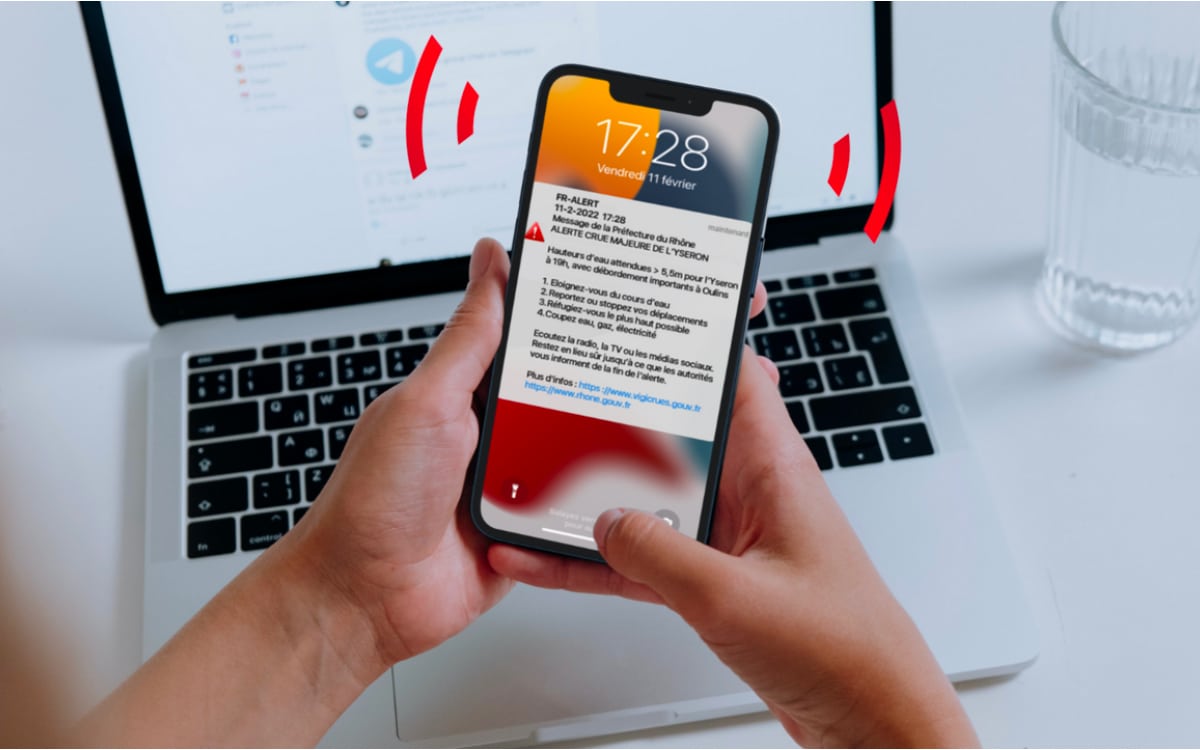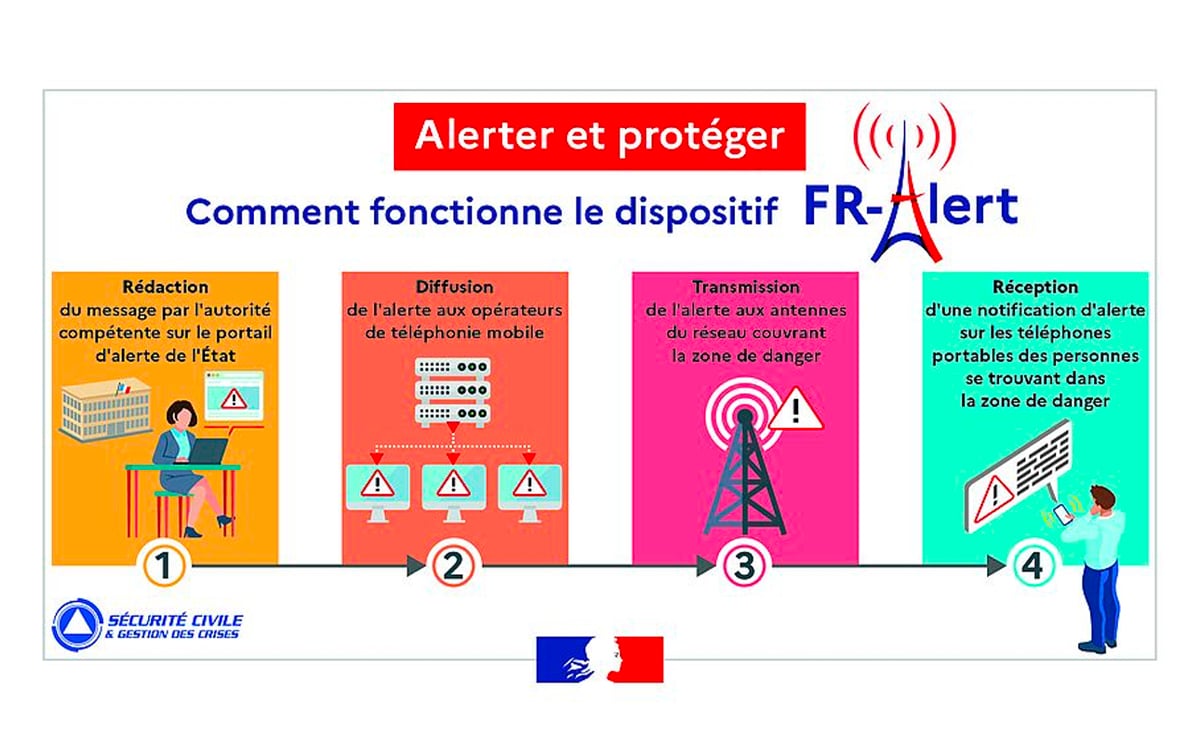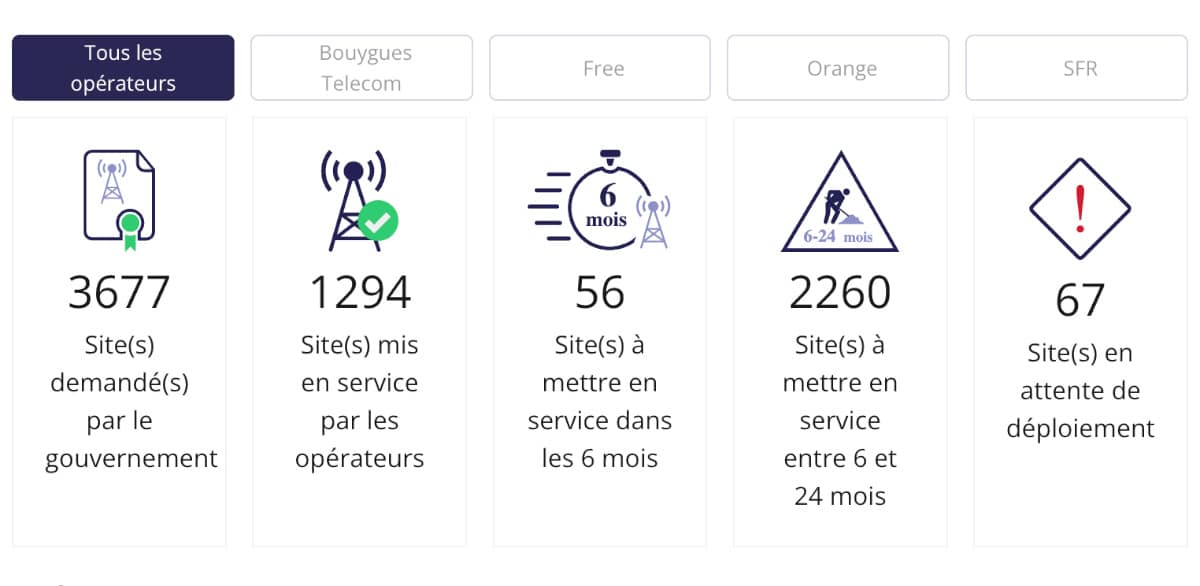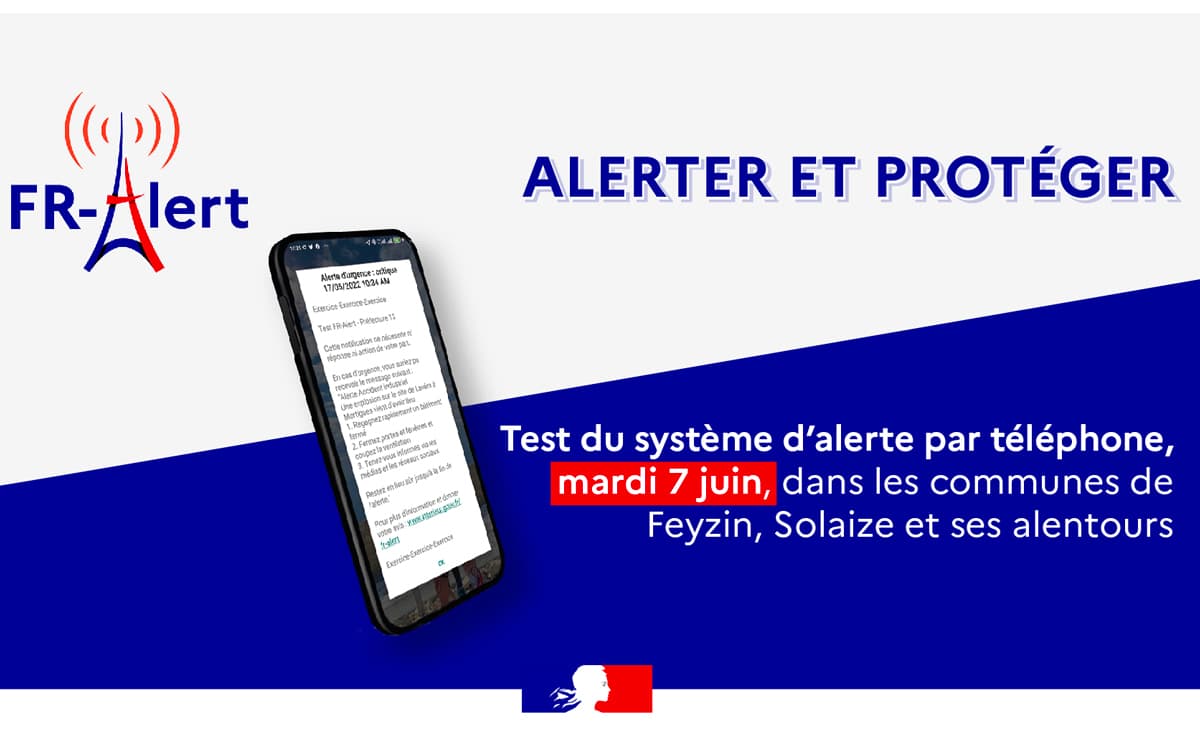
This Tuesday, June 21, 2022, the French government launched FR Alert, a brand new emergency alert system. The purpose of this device is to send notifications to French people’s mobile phones in the event of danger. We explain how it works, in which situations and on which devices.
You may remember the SAIP application (Alert and population information system) launched by the government in 2016 ahead of Euro 2016. This mobile application, which had to be downloaded, was intended to warn users in case of danger near their geographical position.
Unfortunately, the app, developed in a hurry after the attacks of November 13, quickly showed its weaknesses. Many times, SAIP has shown its ineffectivenessin particular during the attack of July 14, 2016 in Nice, or that of the Louvre committed with a knife by a madman in early 2017. The same year, the app was triggered by mistake during a anti-terrorist exercise at the Grand-Quevilly exhibition center.
Faced with these numerous failures, the SAIP application was shelved on June 1, 2018. And 5 years later, its successor has just started operating. In effect, the government has just launched this Tuesday, June 21, 2022 FR-Alert, its brand new emergency alert system. Operation, compatible devices, situations concerned, We present this new device to you in detail.
EN-Alert, what is it?
FR-Alert is the new population alert and information system launched by the government on Tuesday, June 21, 2022. Unlike SAIP, it does not require installing a mobile application. Indeed, it uses the telecommunications network to send notifications to the mobile phones of people present in a dangerous area.
The aim is to inform them about the nature of the risk in question, its exact location and the behavior to adopt to protect yourself. It should be noted that the European directive of December 11, 2018 requires the 27 member states of the European Union to have a population alert system via mobile phone.
What do these alerts look like?
These alerts take the form of a simple notification. When receiving, your mobile will emit a special ring tone, whether in silent or vibrate mode. The ringtone will stop only when the message is viewed. Please note, however, that you cannot receive the alert if you are in Airplane mode or if the smartphone is switched off. Depending on the importance of the event, the notification may contain several paragraphs, in which you will find all the essential information:
- the nature of the risk
- the authority issuing the alert
- the location of the danger (establishment, district, municipality, agglomeration, department, etc.)
- The attitude and behaviors to adopt to protect yourself
- A link to additional information on an official website
Please note, on Android devices, you will be advised to take a screenshot of the notification. Indeed, once consulted, the notification disappears and you will have to look in the internal memory of your smartphone. Which can be tedious. On iOS, on the other hand, don’t panic since it will be possible to find the alert easily in your notifications.
Which devices are compatible?
Surprisingly for a government alert system, not all French people will be able to take advantage of it… Indeed, FR-Alert messages are broadcast in the form of radio waves emitted by telecommunication antennas (cellular broadcasting or cell Broadcast), not by SMS. The goal is not to saturate the mobile network when sending to millions of people.
This system de facto excludes all people who do not have 4G compatible devices. That is nearly 25% of mobile phones in circulation in France. As proved a CREDOC study (Research Center for the Study and Observation of Living Conditions) published in July 2021, one in ten French people is equipped with a “Feature Phone”a device used only for telephone calls.
But that’s not all, since Android smartphones released before 2018 are not compatible. Same observation for iPhones launched before September 2015 (ie before the iPhone 6s). According to the government, the geolocated SMS system operating on 2G, 3G or 4G will be deployed at a later date. For the moment, the State is studying the feasibility of this alternative system with the help of the operators, in particular to reduce the number of SMS sent in order to avoid possible overloading of the network.
Can alerts be received everywhere?
As said above, it will be imperative to be connected in 4G to receive these alerts. In fact, the answer is no. According to the latest ARCEP report, 99% of the population is covered by the four operators, but nevertheless, there are still nearly 5,000 white zones in France where no network is available.
The 3G network, which is more efficient and has better national coverage, could be used, but unfortunately it is not able to send these notifications. As Lieutenant-Colonel of the Gendarmerie Romain Moutard explains in the columns of the world“this would have required costly interventions on thousands of sites”.
As for the degree of precision of the alerts, the minimum area covered will be equivalent to the radius of an antenna, i.e. nearly 5km in the countryside and a few hundred meters in urban areas. In fact, it is impossible to send an alert that concerns only the inhabitants of a street, for example.
In what situations will these alerts be sent?
Here are the major events that may be the subject of an alert notification via FR-Alert:
- Natural disasters : flood, storm and cyclone, fire, tsunami, volcanic eruption, etc.
- Biological and chemical accidents : pollution, gas leak, nuclear incident…
- Health hazards : epidemic, pandemic, agri-food incident, etc.
- Technological and industrial incidents : failure of telecommunications means, serious accidents on road, rail or air networks, industrial incident, etc.
- Serious public security events and terrorist attacks
It should be noted that for dangers concerning restricted areas of French territory, the alert will be targeted and sent only to mobiles in the vicinity.
Is FR-Alert reliable?
In view of the failures of the SAIP app, the question is legitimate and for the moment it is difficult to say. From what we know, the government has already successfully carried out several full-scale testsin particular in the Bouches-du-Rhône from May 16 to 19, 2022 during a civil security exercise called Domino 2022.
By opting for cellular broadcasting, the government has chosen a technology capable of reaching millions of people (even if some will not be able to access it as said before). Still, the burden of such a device weighs heavily on the networks of operators. In mid-June, Orange, Bouygues Telecom, SFR and Free were still busy strengthening their facilities.
Furthermore, cell broadcasting is not immune to false alarms. As our colleagues from Le Monde remind us, a routine test carried out in Hawaii (United States) in 2018 mistakenly triggered the American alert system, ensuring that a nuclear incident was in progress. We let you imagine the rest: scenes of panic all over the island. It will therefore be necessary to hope that the French infrastructures are up to the task during the next alerts to come and that thehe FR-Alert device is not distinguished by its slowness and hiccups like its predecessor.







